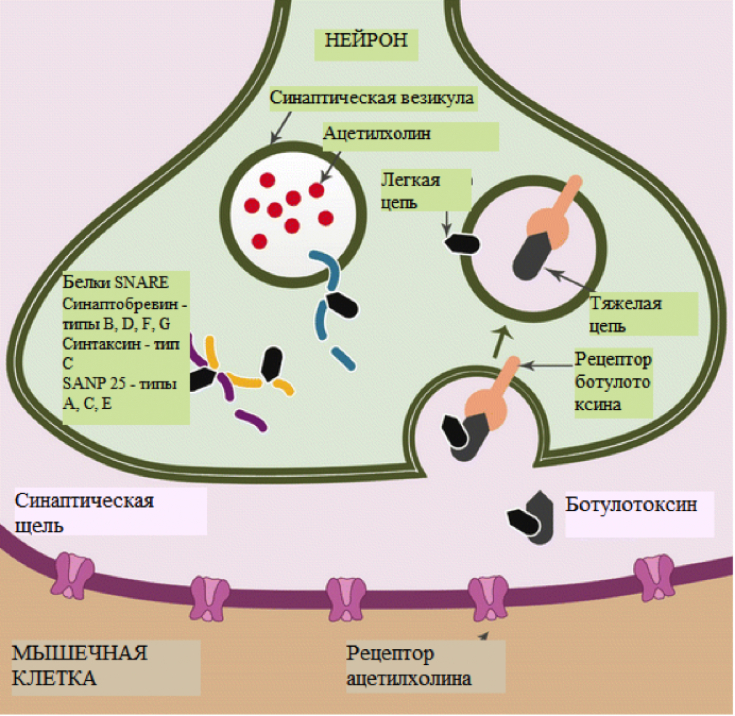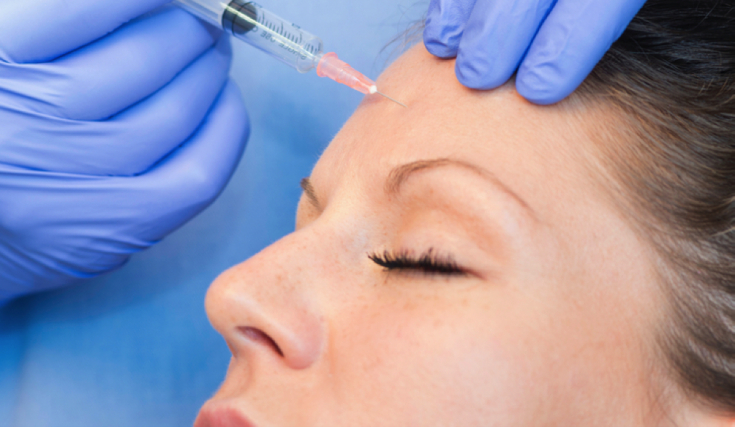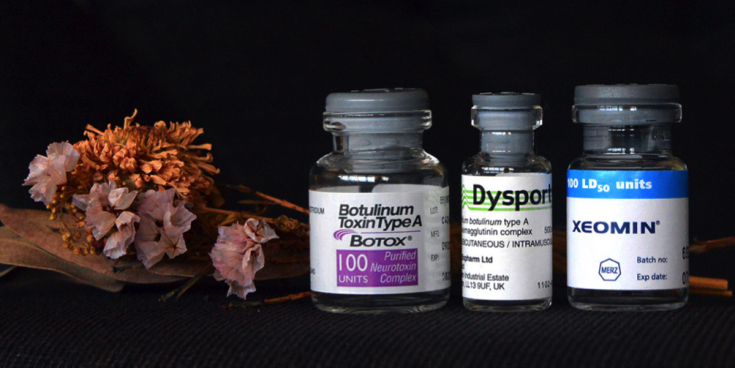Botulinum toxin – an indispensable drug for a doctor practicing in the field of aesthetic medicine and cosmetology. The procedure of botulinum therapy, its risks and effectiveness are well studied. This allows you to answer a number of important questions: how does the neurotoxin work, which botulinum toxin to choose, what determines the effect and duration of the drug, how to restore botulinum toxin and choose the optimal dose of the injected substance, etc. These and other questions about the use Botulinum toxin in cosmetology in the article estet-portal.com is answered by Valentina Zolotareva –candidate of medical sciences, dermatovenereologist of the highest category, cosmetologist.
- Mechanism of action: how does botulinum toxin work after administration
- Clinical applications of botulinum toxin in cosmetology: on-label and off-label
- Contraindications for botulinum toxin injections: absolute and relative
- Factors that affect the result of botulinum therapy
- Botox, Dysport, Xeomin – how do they differ and which botulinum toxin A preparation is better
Mechanism of action: how does botulinum toxin work after administration
Muscle contraction is carried out with the participation of the mediator – the neurotransmitter acetylcholine, which is released at the junction of the muscle and the nerve ending. Botulinum toxin type A blocks the protein SNAP-25, and botulinum toxin type B – synaptobrevin required for the release of acetylcholine. Without the neurotransmitter, the contractility of the muscle is lost because the transmission of the impulse from the nerve ending to the muscle is disrupted.
After intramuscular injection of botulinum toxin, the following occurs:
- Binding to the presynaptic membrane.
- Internalization – absorption of the toxin by the nerve ending, followed by splitting into light and heavy chains.
- Blocking – the light chain cleaves transport proteins, the release of acetylcholine stops, the muscle relaxes (if the target structure is a sweat gland, sweat production stops).
- Spruting – additional axon processes develop.
- Recovery – new synapses are formed, transport proteins are produced, the muscle or gland resumes its function.
Botulinum toxin preparation starts working immediately – within seconds of insertion.
Histological studies show that even multiple injections (more than 30) do not cause irreversible denervation of the muscle.
The size of the post-injection denervation field is determined by:
- dose;
- volume;
- number of dots;
- injection accuracy.

Since the ability to restore muscle innervation is different for everyone and the cosmetologist cannot influence the speed of sprouting, it is important to warn the patient, especially before the first session of botulinum therapy, that muscle mobility can be restored after 1.5 months after injection.
Follow us on Instagram!
On average, the duration of the effect of correction with botulinum toxin is 3–6 months, and for the treatment of hyperhidrosis – 6–9 months. Clinical applications of botulinum toxin in cosmetology: on-label and off-label
Botulinum toxin is used to correct dynamic wrinkles that appear during movement, muscle hypertonicity and excessive sweating.
On-label (approved) use of botulinum toxin:
smoothing wrinkles of the glabella (rabbit wrinkles);- smoothing wrinkles in the corners of the eyes (crow's feet);
- smoothing wrinkles on the forehead.
-label botulinum toxin is used worldwide for:
smooth marionette wrinkles;- smoothing perioral wrinkles;
- chin correction;
- platysma band correction;
- nefertiti lifting;
- correction of ring-shaped neck wrinkles (Rings of Venus);
- smoothing wrinkles in the décolleté zone;
- treatment of hyperhidrosis of the axilla, palms and soles;
- nose tip lift.
- Off-label use of botulinum toxin in cosmetology implies working in violation of the instructions and maintaining the principle of professional freedom of the doctor.
off-label, you need:
be sure that the product is superior to other methods that have received standard approval;- have sufficient evidence-based or good medical practice experience to demonstrate the safety and efficacy of the technique;
- take responsibility for the application of the chosen methodology;
- keep a clear, accurate and legible history of prescribing and this method and, if there is a departure from standard practice, state the reasons for such a decision.
- Many doctors have good experience, but do not dare to announce the results of off-label use of drugs. All responsibility for such results lies with the doctor. Some doctors, confident that they will be able to defend their approaches, share their experience at conferences.
Botulinum toxin: treatment of pathological scars and rosacea
New possibilities of botulinum therapy in cosmetologyapplication for persistent flushing of the face, mediated by the influence of the autonomic nervous system;
- rosacea;
- acne;
- chemical liposuction;
- hair growth control;
- cosmetic surgery;
- Excessive sweating during
climacteric hot flashes. - Contraindications to botulinum toxin injections: absolute and relative
pregnancy and lactation;
myasthenic syndromes characterized by rapid muscle fatigue;- generalized movement disorders;
- general infectious diseases and the presence of foci of inflammation at the intended injection sites;
- high myopia;
- hemophilia;
- individual intolerance to drugs with BTA in the composition;
- oncological diseases;
- prone to allergic reactions;
- taking any antibiotics.

tendency to bruising;
tendency to form persistent edema;- under 18 years of age;
- age 60+ (but in practice this item is not a contraindication);
- Regular alcohol consumption
- (Treatment will not be effective).
- Factors that affect the result of botulinum therapy The main factors that affect the result of botulinum therapy – sprouting and the professional level of a doctor.
Patient satisfaction is increased by adjusting the
botulinum toxin dosage according to the type of muscle activity:
- hyperkinetic
- (in most men) – the standard dosage is increased by 1.5–2 times; hypertonic
- – combination with fillers is recommended. 2 weeks after the first injection of botulinum toxin, a corrective procedure should be carried out, and only after a month – inject a filler or biorevitalizant. There are no differences in clinical efficacy and duration of effect between commercially available botulinum toxin type A preparations (Xeomin, Botox, Dysport) when used at recommended dosages.
- Important:
Elderly patients do not require a downward revision of dosages. When managing such patients, it is recommended to take into account the type of muscle activity. When working, an individual approach is important.
Based on expert clinical experience, the duration of the effect- is longer for the correction of the upper third of the face than for the correction of the lower third
- . It is necessary to warn the patient about this in advance in order to avoid high expectations. The result of botulinum therapy is not affected by the transfer of the patient from one toxin to another.
- The Full Face technique involves working with a number of zones, which increases the effectiveness of botulinum therapy. High doses of botulinum toxin have a systemic effect.
- Use of sub-optimal doses of botulinum toxin may result in reduced duration of effect and reduced patient satisfaction.
- There is a category of patients for whom botulinum toxin A does not work either in standard or in excessive doses. In such cases, it may be appropriate to switch the patient to botulinum toxin type B products (if they are registered in your country).
- There is no consensus on the optimal dilution of the toxin and how long it will retain its therapeutic properties after reconstitution. Most experts prefer to
- use 2.5-fold dilution of BTA in standard 100U containers
Botulinum toxin injections for male facial rejuvenation: practical recommendations
According to the literature, it is reasonable to use a dilution in the range from 1- to 10-fold. In order to reduce the number of complications to zero, we are required to use the minimum dilution. It is important to adhere to the dosages of botulinum toxin, regardless of the degree of dilution under discussion. Use the drug as indicated in the instructions, store in the refrigerator at a temperature of 2–8
oC. There are studies that confirm the retention of the necessary properties of the toxin for several weeks. However, this dose is used only for additional correction.
Botox, Dysport, Xeomin – what is the difference and which preparation of botulinum toxin A is better to choose and in which case The most powerful botulinum toxin serotype in cosmetology – A. At the same time, there is a category of patients who are insensitive to this type of toxin. They are corrected with botulinum toxin type B.
 Botox:
Botox:
Botulinum Toxin Type A Complex – hemagglutinin – 100 units;
human serum albumin – 500 mcg,
sodium chloride – 900 mcg.- Shelf life from the moment of breeding – no more than 24 hours.
- Dysport:
BTA complex – hemagglutinin (complexing protein) – 500 units, 300 units;
human albumin – 125 mcg;
lactose monohydrate – 2.5 mg.- Shelf life from the moment of breeding – no more than 8 hours. Over time, it was noticed that the drug can be used for additional correction a few weeks after recovery.
- Read also: Botulinum toxin – beautician's universal tool: insertion techniques
Xeomin: This product does not contain complexing proteins that may cause drug intolerance due to antibody production:
BTA without complexing proteins 100 units or 50 units;
human serum albumin – 1 mg.
- Retention period – no more than 24 hours after dilution.
- Complexing proteins in BTA preparations can increase the production of neutralizing antibodies to the toxin, leading to a decrease or no effect on the patient.
- Xeomin may be suitable:
patients allergic to other drugs;
when reducing the duration of effect of other botulinum toxin type A preparations in case of insensitivity.
- Experienced doctors get
- equally good results when working with different botulinum toxin preparations . Main – availability of official registration of a specific botulinum toxin preparation in your country.
YouTube-channel!








Add a comment